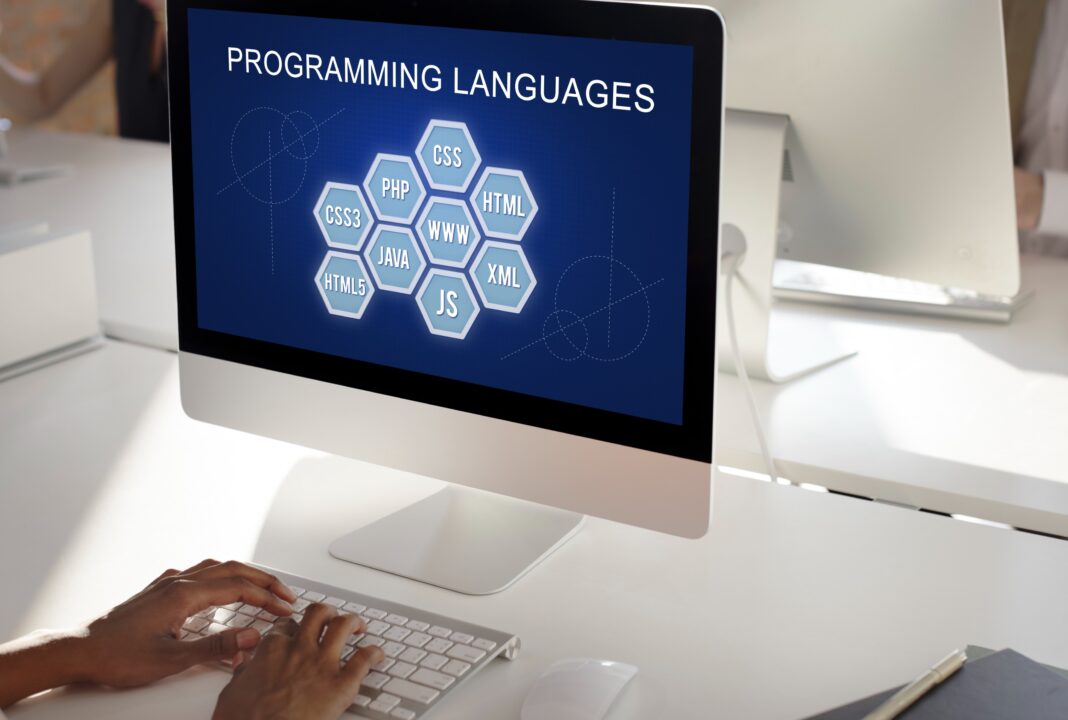Introduction
Selecting the right programming language is one of the most critical decisions in app development. The wrong choice can lead to performance bottlenecks, scalability issues, and increased development costs. With rapid advancements in technology, developers need languages that offer speed, flexibility, and strong community backing.

This guide provides an in-depth analysis of the top 10 programming languages for app development in 2025, covering their strengths, weaknesses, real-world applications, and future prospects. Whether you’re building mobile apps, enterprise software, or AI-driven solutions, this breakdown will help you make an informed decision.
1. JavaScript (with React Native and Node.js)
JavaScript continues to dominate app development due to its versatility. It powers both frontend and backend development, making it a full-stack solution.
Why JavaScript?
- Cross-Platform Development: React Native allows developers to write a single codebase for iOS and Android, reducing development time.
- Rich Ecosystem: npm (Node Package Manager) hosts over 1.5 million packages, providing solutions for nearly any functionality.
- Performance Improvements: Modern JavaScript engines like V8 (used in Chrome and Node.js) optimize execution speed.
Use Cases
- Mobile Apps: React Native is used by Facebook, Instagram, and Uber Eats.
- Web Apps: JavaScript powers dynamic web applications with frameworks like Angular and Vue.js.
- Backend Services: Node.js enables scalable server-side applications (e.g., Netflix, PayPal).
Limitations
- Performance Constraints: Heavy computations may require native modules.
- Fragmented Ecosystem: Keeping up with frequent framework updates can be challenging.
Future Outlook
JavaScript will remain dominant, with improvements in WebAssembly (Wasm) enabling near-native performance for web apps.
2. Swift (for iOS and macOS Development)
Swift is Apple’s modern programming language designed for performance and safety. It replaced Objective-C as the primary language for iOS development.
Why Swift?
- Blazing Fast: Optimized for Apple’s hardware, Swift outperforms Objective-C in benchmarks.
- Memory Safety: Automatic Reference Counting (ARC) reduces crashes.
- Readable Syntax: Cleaner and more concise than Objective-C.
Use Cases
- iOS Apps: Used in apps like Lyft, Airbnb, and LinkedIn.
- macOS & watchOS: Powers desktop and wearable applications.
- Game Development: Works with Apple’s Metal for high-performance graphics.
Limitations
- Apple-Only: No official support for Android or Windows.
- Frequent Updates: Breaking changes can require code adjustments.
Future Outlook
Swift will continue evolving with Apple’s ecosystem, potentially expanding into server-side development with projects like Vapor.
3. Kotlin (for Android and Cross-Platform Development)
Kotlin, endorsed by Google as the preferred language for Android, offers modern features while maintaining Java compatibility.
Why Kotlin?
- Null Safety: Eliminates NullPointerExceptions, a common issue in Java.
- Coroutines: Simplifies asynchronous programming.
- Interoperability: Can call Java code seamlessly.
Use Cases
- Android Apps: Pinterest, Trello, and Evernote use Kotlin.
- Backend Development: Works with Spring Boot and Ktor.
- Multiplatform Projects: Kotlin Multiplatform allows sharing code between iOS and Android.
Limitations
- Smaller Community: Fewer resources compared to Java.
- Build Times: Slightly slower than Java in some cases.
Future Outlook
Kotlin will grow as Google pushes it for Android, with improvements in multiplatform capabilities.
4. Python (with Kivy, BeeWare, and AI Integration)
Python’s simplicity makes it a favorite for beginners, but its AI capabilities make it powerful for app development.
Why Python?
- Easy to Learn: Minimal syntax reduces development time.
- AI & Machine Learning: TensorFlow, PyTorch, and OpenCV integrate smoothly.
- Cross-Platform Frameworks: Kivy and BeeWare allow mobile app development.
Use Cases
- Prototyping: Quick MVP development.
- AI-Powered Apps: Chatbots, recommendation engines.
- Automation & Scripting: Backend services and DevOps tools.
Limitations
- Performance Issues: Slower than compiled languages like C++ or Rust.
- Mobile Development Gaps: Not as optimized as Swift or Kotlin.
Future Outlook
Python will remain strong in AI and backend development, with potential improvements in mobile frameworks.
5. Dart (with Flutter for Cross-Platform Apps)
Dart, developed by Google, powers Flutter—a leading framework for building natively compiled apps from a single codebase.
Why Dart?
- Hot Reload: Instantly see changes without restarting the app.
- High Performance: Compiles to native ARM code.
- Expressive UI: Customizable widgets for beautiful interfaces.
Use Cases
- Cross-Platform Apps: Used by Google Ads, Alibaba, and BMW.
- Web Apps: Flutter supports web compilation.
- Desktop Apps: Windows, macOS, and Linux support.
Limitations
- Smaller Ecosystem: Fewer third-party libraries than JavaScript.
- Learning Curve: Requires understanding Flutter’s architecture.
Future Outlook
Flutter will continue growing, with Google expanding its capabilities in desktop and embedded systems.
6. Java (for Enterprise Android and Legacy Systems
Java remains a staple in enterprise environments and Android development, despite Kotlin’s rise.
Why Java?
- Stability: Battle-tested for decades.
- Security: Used in banking and government applications.
- Cross-Platform: Runs on any device with a JVM.
Use Cases
- Android Apps: Still used in many legacy apps.
- Enterprise Software: Large-scale systems in finance and healthcare.
- Cloud Computing: Powers backend services in AWS and Google Cloud.
Limitations
- Verbose Syntax: More boilerplate than Kotlin.
- Slower Innovation: Lags behind Kotlin in modern features.
Future Outlook
Java will remain relevant in enterprise but may decline in mobile as Kotlin adoption grows.
7. C# (with .NET MAUI for Cross-Platform Apps)
C# is Microsoft’s robust language, ideal for Windows, mobile, and game development.
Why C#?
- Performance: Near-native execution speed.
- Visual Studio: Best-in-class IDE with powerful debugging.
- Game Development: Used in Unity for mobile games.
Use Cases
- Windows Apps: Enterprise desktop applications.
- Mobile Games: Unity powers 60% of mobile games.
- Backend Services: ASP.NET for scalable APIs.
Limitations
- Microsoft-Centric: Less popular outside Windows ecosystems.
- Learning Curve: Steeper than Python or JavaScript.
Future Outlook
C# will thrive in gaming and enterprise, with .NET MAUI improving cross-platform support.
8. Go (Golang) (for High-Performance Backends)
Go, developed by Google, is designed for scalability and concurrency in backend services.
Why Go?
- Fast Compilation: Efficient build process.
- Concurrency Model: Goroutines handle thousands of tasks efficiently.
- Minimalist Design: Easy to maintain and deploy.
Use Cases
- Cloud Services: Used by Docker, Kubernetes, and Google Cloud.
- Microservices: Ideal for scalable APIs.
- CLI Tools: Fast, lightweight command-line applications.
Limitations
- Lack of Generics: Until recently, Go lacked generic programming support.
- Young Ecosystem: Fewer libraries than Java or Python.
Future Outlook
Go will grow in cloud computing and DevOps, with improvements in generics and tooling.
9. Rust (for Security and Performance-Critical Apps)
Rust is gaining popularity for system-level programming where safety and speed are crucial.
Why Rust?
- Memory Safety: No garbage collector, yet prevents crashes.
- Blazing Fast: Comparable to C++ in performance.
- WebAssembly Support: Ideal for high-performance web apps.
Use Cases
- Blockchain: Solana and Polkadot use Rust.
- Game Engines: Used in next-gen game development.
- Operating Systems: Firefox’s Servo engine is written in Rust.
Limitations
- Steep Learning Curve: Borrow checker concept is challenging.
- Young Ecosystem: Fewer libraries than established languages.
Future Outlook
Rust will expand in systems programming, WebAssembly, and security-focused applications.
10. TypeScript (Scalable JavaScript Alternative)
TypeScript adds static typing to JavaScript, making large codebases more manageable.
Why TypeScript?
- Type Safety: Catches errors at compile time.
- Better Tooling: Enhanced autocompletion and refactoring.
- Compatibility: Works with all JavaScript libraries.
Use Cases
- Enterprise Web Apps: Used by Microsoft, Slack, and Asana.
- Angular & React: Preferred for large-scale frontend projects.
- Node.js Backends: Improves backend code reliability.
Limitations
- Additional Setup: Requires transpilation to JavaScript.
- Learning Curve: Developers must understand typing systems.
Future Outlook
TypeScript will continue growing as the standard for scalable JavaScript applications.
FAQ
Q1: Which language is best for beginners?
A: Python and JavaScript are the easiest to learn due to simple syntax and extensive tutorials.
Q2: Should I learn Kotlin or Java for Android?
A: Kotlin is the future, but Java is still useful for maintaining legacy apps.
Q3: Is Flutter better than React Native?
A: Flutter offers better performance and UI control, while React Native has a larger community.
Q4: Can Rust replace C++?
A: Rust is gaining ground in system programming but hasn’t fully replaced C++ yet.
Q5: Why use TypeScript over JavaScript?
A: TypeScript improves maintainability and reduces runtime errors in large projects.
Conclusion
The best programming language depends on your project’s needs:
- Mobile Apps: Swift (iOS), Kotlin (Android), Flutter (cross-platform).
- Web Apps: JavaScript/TypeScript, Python (backend).
- High Performance: Rust, Go, C++.
- AI & Prototyping: Python.
Evaluate your requirements, team expertise, and long-term goals before choosing. Start coding with confidence!

